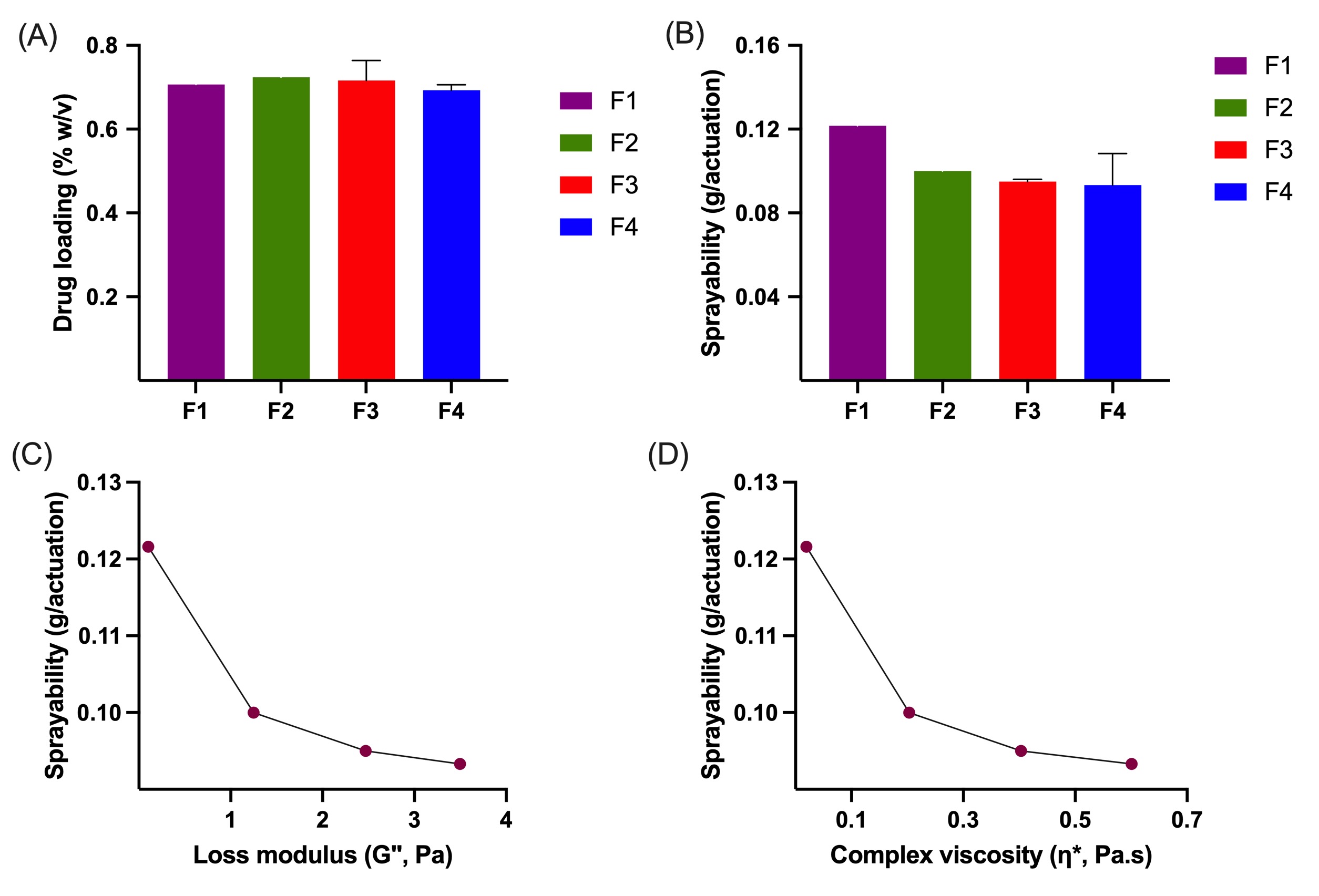Formulation and Delivery - Chemical
Category: Poster Abstract
(W0930-02-08) Bupivacaine Hydrochloride Mucoadhesive In Situ Forming Gels for Oral Mucositis: Physiological Considerations
Wednesday, October 25, 2023
9:30 AM - 10:30 AM ET
- RK
Radha Kulkarni, MS (she/her/hers)
University of Connecticut
Storrs, Connecticut, United States - RK
Radha Kulkarni, MS (she/her/hers)
University of Connecticut
Storrs, Connecticut, United States 
Suraj Fanse, MS (he/him/his)
PhD Graduate Student
University of Connecticut
Storrs Mansfield, Connecticut, United States- RL
Rajesh Lalla, Ph.D.
University of Connecticut
Farmington, Connecticut, United States 
Diane J. Burgess, Ph.D. (she/her/hers)
Distinguished Professor
University of Connecticut
Storrs, Connecticut, United States
Presenting Author(s)
Main Author(s)
Co-Author(s)
Purpose: Oral mucositis is a common side effect of cancer therapy which is accompanied by uncontrolled pain. Current commercial therapies for pain management include a lidocaine liquid oral rinse and opioids (oral tablets or transdermal patches). However, these strategies have major limitations such as the insufficient contact time between the oral solution and the mucosa, the short half-life of lidocaine (less than 30 min) and the addiction associated with the use of opioids. To overcome the shortfalls of the existing therapies, a novel mucoadhesive in situ forming gel containing Bupivacaine HCl is proposed to achieve a prolonged duration of pain control. Bupivacaine HCl was used as the model drug since it has a high lipid solubility which favors drug diffusion through the lipid-rich neural membranes resulting in higher anesthetic efficacy than lidocaine. Importantly, the proposed formulation contains mucoadhesive polymers to enhance the mucosal contact time and it can be selectively sprayed on the affected mucosal area to minimize side effects. The duration of action and performance of oral mucoadhesive in situ forming gels is dependent on several physiological factors such as the shape of the oral cavity, the salivary flow, the thickness of the buccal mucosa, as well as physical activities. Therefore, a conventional approach to formulation development and evaluation may not be an accurate indicator of clinical performance. This study aims to: (i) develop a bupivacaine HCl mucoadhesive in situ forming gel, and (ii) investigate the impact of the physiological conditions of the oral cavity on product performance.
Methods: Four poloxamer-based (poloxamer 407 and 188) in situ gelling formulations (F1, F2, F3, and F4) each containing a different mucoadhesive polymer (PVP, sodium CMC, sodium alginate, and chitosan) were prepared. The pH of the formulations was adjusted between 6.0-6.2. The composition of each formulation and the preparation methods were optimized to achieve adequate gelation, sprayability and mucoadhesion. All the formulations were characterized via drug loading (using HPLC), gelation temperature, sprayability, ex vivo mucoadhesion using porcine buccal mucosa (via texture analyze), and in vitro drug release (USP II apparatus equipped with enhancer cells). Rheological analysis of the thermosensitive behavior of the in situ forming gels was carried out using ARES G2 cone and plate rheometer. In addition, the effect of physiological factors on mucoadhesion was evaluated by comparison of two different techniques. Mucoadhesion method 1 was based on a conventional texture analyzer technique to determine the mucoadhesive force between the formulation and mucosa. Mucoadhesion method 2 involved dilution of the formulations with artificial saliva before contact with the mucosa, and measuring the mucoadhesive force immediately. Similarly, gelling behavior was evaluated using two different methods: gelling method 1 involved the conventional tube-inversion test while gelling method 2 involved a slide-tilting method (to mimic the vertical surface area of the oral cavity and gravity) along with dilution using artificial saliva.
Results: All the formulations had similar drug loading (Fig. 1A). Increasing the concentration of the mucoadhesive polymers led to high mucoadhesive strength but compromised sprayability (actuation from the spray bottles). Sprayability showed the following rank order of decreasing sprayable content: F1 > F2 > F3 >F4 (Fig. 1B). Correlations between the sprayability and both the loss modulus and the complex viscosity of the formulations at room temperature was established (Fig. 1C,D). This underpins the importance of achieving an optimum balance between mucoadhesion and viscosity for successful product performance. The rheological profiles of the formulations reveal three main regions: (i) initial phase which indicates a viscous gel (G” >G’); (ii) intermediate region with gradual increase in moduli (G”< G’) which indicates liquid crystal arrangement of micelles; and (iii) a plateau indicating consolidated gel formation due to close packing of micelles (Fig. 2A). Interestingly, the in vitro drug release profiles of the formulations with different mucoadhesive polymers were similar (Fig. 2B). All formulations followed first order release kinetics model. It was observed that the physiological attributes of the buccal cavity such as a continuous salivary flow as well as gravity has a significant effect on formulation performance and evaluation. All the formulations showed higher mucoadhesion and lower gelling temperatures using method 1 compared to method 2 (Fig. 3A,B). This may result in an overestimation of the critical quality attributes if the physiological factors are not considered (method 1).
Conclusion: Mucoadhesive in situ forming gels capable of prolonged residence time, sustained release, and better patient compliance compared to existing therapies for oral mucositis have been proposed. Despite the different charge and mucoadhesive mechanisms of the polymers, all the formulations showed comparable mucoadhesive and in vitro drug release performance. The current study reveals significant differences in mucoadhesion and in situ gelation arising due to the interplay of physiological factors which can lead to product failure. Thus, it is imperative that these factors are considered during the development and evaluation for successful translation from bench to clinic.
Acknowledgements: This work was supported by the University of Connecticut, Pfizer Distinguished Chair in Pharmaceutical Technology funds, UConn SPARK Technology Commercialization Fund, and the International Association for Dental Research (Innovation in Oral Care award fund).
 Fig. 1. A) Drug loading of the in situ gelling formulations (mean ±SD, n=3); B) sprayability of the in situ gelling formulations (mean ±SD, n=3); C) correlation between formulation sprayability and loss modulus; D) correlation between formulation sprayability and complex viscosity.
Fig. 1. A) Drug loading of the in situ gelling formulations (mean ±SD, n=3); B) sprayability of the in situ gelling formulations (mean ±SD, n=3); C) correlation between formulation sprayability and loss modulus; D) correlation between formulation sprayability and complex viscosity. Fig. 2 A) Representative rheological profile of the in situ gelling formulations depicting the three regions of viscosity and their corresponding micellar arrangement; and B) in vitro drug release profiles of the in situ gelling formulations (mean ±SD, n=3).
Fig. 2 A) Representative rheological profile of the in situ gelling formulations depicting the three regions of viscosity and their corresponding micellar arrangement; and B) in vitro drug release profiles of the in situ gelling formulations (mean ±SD, n=3). Fig. 3 A) Mucoadhesive strengths (g) of the in situ gelling formulations via methods 1 and 2 determined using porcine buccal mucosa through a texture analyzer (mean ±SD, n=3); and B) Gelling behavior of the in situ gelling formulations via methods 1 and 2 (mean ±SD, n=3).
Fig. 3 A) Mucoadhesive strengths (g) of the in situ gelling formulations via methods 1 and 2 determined using porcine buccal mucosa through a texture analyzer (mean ±SD, n=3); and B) Gelling behavior of the in situ gelling formulations via methods 1 and 2 (mean ±SD, n=3).